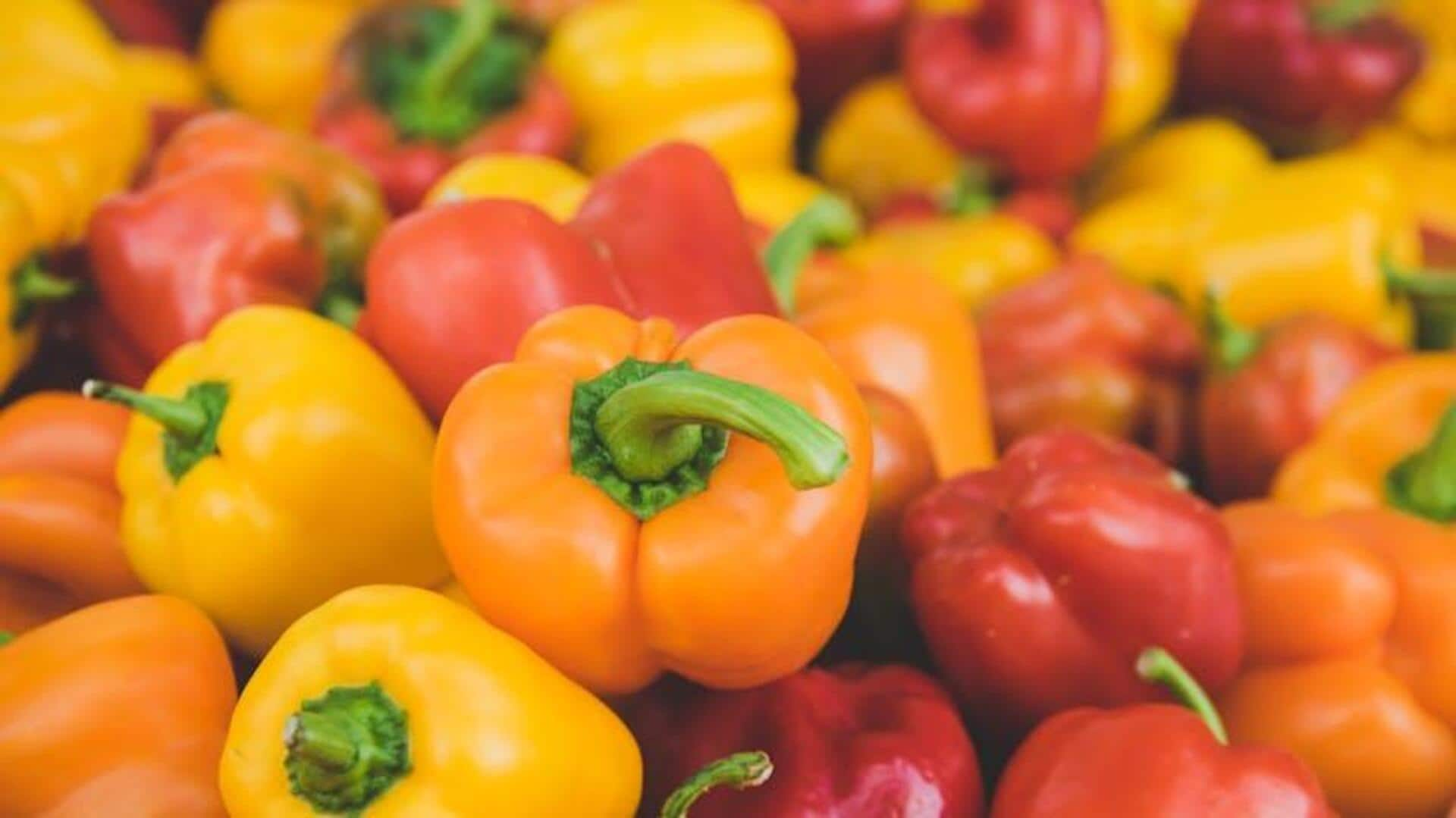
Bell peppers v/s tomatoes: Which has more vitamin C?
What's the story
Bell peppers and tomatoes are two of the most popular vegetables. Known for their nutritional benefits, both these veggies are packed with vitamin C. Vitamin C is important for the growth and repair of body tissues, which makes it an important part of a healthy diet. Here's how bell peppers and tomatoes differ in the vitamin C department.
#1
Bell peppers: A vitamin C powerhouse
Bell peppers are well-known for their vitamin C content. Just one cup of chopped red bell pepper contains some 190 milligrams of vitamin C. That's more than double the recommended daily intake for adults! Green bell peppers also offer a good amount of this nutrient, albeit slightly less than their red counterparts. Including bell peppers in your diet can help you easily increase your vitamin C intake.
#2
Tomatoes: A versatile source
Tomatoes provide a decent amount of vitamin C, though not as much as bell peppers. One medium-sized tomato contains approximately 20 milligrams of vitamin C, which accounts for about 27% of the recommended daily intake for adults. Although tomatoes aren't as rich in this nutrient as bell peppers, they are easy to use in a variety of dishes, making them a handy source of vitamin C.
#3
Comparing nutritional benefits
When putting the two vegetables side by side, it's evident that bell peppers are richer in vitamin C than tomatoes. However, the two vegetables provide other health benefits as well apart from this nutrient. Bell peppers are low in calories and packed with antioxidants such as beta-carotene and flavonoids. Tomatoes have lycopene, an antioxidant associated with several health benefits, including lower heart disease risk factors.
Tip 1
Tips for maximizing intake
To ensure you get the most out of vitamin C from these vegetables, try having them raw or lightly cooked as heating them can reduce nutrients. Adding raw slices to salads or sandwiches is an effortless way to relish them without compromising much on nutritional value. Also, using both vegetables in your meals helps you enjoy their individual traits while boosting flavor profiles.